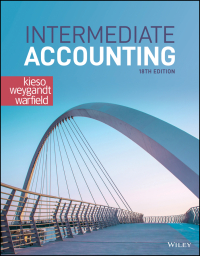On January 1, 2024, Garner issued 10-year, $200,000 face value, 6% bonds at par. Each $1,000 bond
Question:
On January 1, 2024, Garner issued 10-year, $200,000 face value, 6% bonds at par. Each $1,000 bond is convertible into 30 shares of Garner $2 par value common stock. The company has had 10,000 shares of common stock (and no preferred stock) outstanding throughout its life. None of the bonds have been converted as of the end of 2025. (Ignore all tax effects.)
Accounting
a. Prepare the journal entry Garner would have made on January 1, 2024, to record the issuance of the bonds.
b. Garner’s net income in 2025 was $30,000 and was $27,000 in 2024. Compute basic and diluted earnings per share for Garner for 2025 and 2024.
c. Assume that 75% of the holders of Garner’s convertible bonds convert their bonds to stock on June 30, 2026, when Garner’s stock is trading at $32 per share. Garner pays $50 per bond to induce bondholders to convert. Prepare the journal entry to record the conversion.
Analysis
Show how Garner will report income and EPS for 2025 and 2024. Briefly discuss the importance of GAAP for EPS to analysts evaluating companies based on price-earnings ratios. Consider comparisons for a company over time, as well as comparisons between companies at a point in time.
Principles
In order to converge GAAP and IFRS, the FASB is considering whether the equity element of a convertible bond should be reported as equity. Describe how the journal entry you made in part (a) above would differ under IFRS. In terms of the accounting principles discussed in Chapter 1, what does IFRS for convertible debt accomplish that GAAP potentially sacrifices? What does GAAP for convertible debt accomplish that IFRS potentially sacrifices?
Step by Step Answer:

Intermediate Accounting
ISBN: 9781119790976
18th Edition
Authors: Donald E. Kieso, Jerry J. Weygandt, Terry D. Warfield





